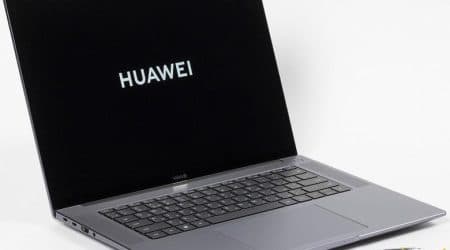In today’s fast-paced society, the allure of portable devices has woven itself into the fabric of daily life, transforming the way individuals connect, communicate, and unwind. As technology continues to evolve and integrate seamlessly into personal routines, the challenge of maintaining a balanced relationship with these gadgets has become increasingly prevalent. This scenario often raises concerns about the impact of prolonged usage on mental well-being and productivity.
Recognizing the significance of mindfulness in the digital age, many users seek strategies to manage their screen interactions in a more conscious and deliberate manner. Employing systematic approaches not only fosters a healthier connection to technology but also encourages more meaningful engagements, both online and offline. By participating in this transformative journey, individuals have the opportunity to reclaim time and focus on what truly matters.
This exploration aims to provide insight into the tools available for cultivating a constructive digital lifestyle. From personalized insights to tailored resources, effective management of device usage can lead to improved satisfaction and fulfillment in various aspects of life. Understanding the pathways to digital equilibrium opens the door to richer experiences beyond the screen.
Understanding Digital Addiction Today
In the contemporary world, the pervasive influence of technology on daily life has led to a significant shift in how individuals interact with digital devices. This phenomenon has resulted in a growing concern about the impact of prolonged engagement with screens, particularly among younger generations. As these gadgets become integral to communication, entertainment, and information access, it’s essential to reflect on their effects on mental well-being and personal relationships.
The Social Implications
Frequent interaction with gadgets can lead to alterations in social dynamics, often causing individuals to prioritize virtual connections over face-to-face engagements. The allure of notifications and instant access to content can create barriers to meaningful relationships, leading to feelings of isolation despite being constantly ‘connected.’ Understanding these implications helps in recognizing the necessity of addressing the balance between virtual interactions and real-life connections.
Recognizing Behavioral Patterns
Identifying specific behavioral tendencies can provide insight into the extent of device engagement. People may find themselves checking their screens habitually, often leading to a sense of urgency around notifications. Awareness of these patterns is vital, as it serves as a foundation for implementing practical strategies that promote healthier use of technology. By acknowledging these habits, individuals can begin to cultivate a more mindful approach to their digital consumption.
Impact of Screen Overuse on Life
Excessive usage of handheld devices in daily life has been linked to numerous negative consequences. These ramifications span various aspects of human existence, affecting relationships, mental well-being, physical health, and productivity. Understanding these impacts is crucial for fostering a healthier interaction with technology.
| Aspect | Consequences |
|---|---|
| Relationships | Decreased face-to-face interaction, weakened bonds, potential misunderstandings. |
| Mental Health | Increased anxiety, depression, and feelings of isolation. |
| Physical Health | Sedentary lifestyle, eye strain, disrupted sleep patterns. |
| Productivity | Reduced focus, procrastination, and diminished work performance. |
Awareness of these impacts can lead to more mindful consumption of digital content, ultimately enhancing quality of life and fostering healthier habits. Taking steps to reduce excessive engagement with technology can pave the way for a more balanced and fulfilling existence.
This section focuses on exploring the various tools and functionalities designed to help users manage their interaction with digital devices. Understanding these features can empower individuals to cultivate a balanced relationship with technology and promote healthier habits.
Among the key components are options for tracking usage patterns, setting notifications, and establishing boundaries on app access. Each tool plays a role in helping individuals regain control over their time spent online and foster mindful engagement.
| Feature | Description | Benefits |
|---|---|---|
| App Usage Tracking | Displays detailed reports on how much time is spent on various applications. | Helps users identify habits and areas for improvement. |
| Downtime | Allows users to schedule periods during which only designated apps are available. | Encourages breaks and reduces the urge to constantly check devices. |
| App Limits | Facilitates setting daily time restrictions for specific applications. | Promotes moderation and reduces excessive usage. |
| Content and Privacy Restrictions | Enables the setting of guidelines for content and personal information access. | Enhances safety and customization for individuals or families. |
| Communications Limits | Monitors and restricts contacts during defined periods. | Supports focus by limiting distractions from messages and calls. |
Utilizing these features effectively can lead to more intentional use of devices, allowing for a healthier balance between technology and daily life.
Creating Personalized Usage Goals
Establishing tailored objectives for device engagement can significantly enhance overall well-being and productivity. By identifying specific targets, individuals can actively monitor and adjust their digital habits, cultivating a healthier relationship with technology.
Begin by assessing current usage patterns. Analyze how much time is spent on various applications and activities. This insight serves as a foundation for setting realistic and achievable goals. For instance, if social media consumes a considerable portion of daily hours, consider aiming for reduced interaction, allowing more time for other enriching pursuits.
Next, define clear motivations for each goal. Understanding the reasons behind these targets is crucial. Whether it’s striving for improved focus, fostering creativity, or enhancing physical activity, having a purpose can bolster commitment and accountability.
It may also be beneficial to establish incremental adjustments. Start small by reducing usage by a set amount of time each week. Gradually increasing these reductions allows for a smoother transition. This method can mitigate feelings of deprivation while promoting positive habits over time.
Lastly, consider utilizing reminders and tracking features that can provide valuable feedback. Engaging with progress indicators can motivate individuals to stay on course and appreciate their achievements. By personalizing usage targets, it becomes possible to strike a balance between digital interaction and other aspects of life, leading to a more fulfilling experience overall.
Monitoring Your Habits Effectively
Understanding our relationship with digital devices is crucial in today’s fast-paced world. By examining our usage patterns, we can identify areas that require adjustment to foster a healthier interaction with technology. Establishing a regular review process can assist in recognizing these patterns and implementing thoughtful changes.
Identify Usage Patterns
Recognizing the way technology impacts daily life can be a game-changer. Here are some steps to analyze and understand your usage:
- Track the amount of time spent on various applications.
- Note the frequency of checks for notifications or messages.
- Identify times of day when usage spikes, noting triggers such as boredom or stress.
Set Up Tracking Mechanisms
Utilize built-in features or third-party applications to monitor behavior. Consider these options:
- Enable native tracking tools that provide insights into daily habits.
- Explore other applications designed to surpass built-in capabilities for deeper analysis.
- Regularly review reports to assess progress and make necessary adjustments.
By effectively observing our engagement with technology, we can create a more balanced approach that promotes well-being and enhances productivity.
Encouraging Healthy Device Interactions
In today’s digital landscape, fostering positive relationships with technology plays a crucial role in our daily lives. By promoting mindful usage and purposeful engagement, individuals can enhance their overall well-being while still benefiting from the convenience and connectivity that modern devices offer.
Establishing routines can be an effective strategy for creating healthier interactions. Encouraging scheduled periods for device usage helps maintain a balanced lifestyle, allowing time for both online and offline activities. This practice cultivates a sense of discipline and ensures that technology serves as a tool for productivity rather than a source of distraction.
Additionally, implementing screen-free zones can significantly contribute to more meaningful experiences. Designating specific areas, such as dining rooms or bedrooms, as spaces free from gadget usage promotes quality time spent with family and friends. This approach nurtures interpersonal relationships and allows for genuine connections beyond the digital realm.
Fostering mindfulness not only helps individuals engage with their devices more meaningfully but also encourages critical reflection on usage habits. Taking the time to assess the purpose and necessity behind checking notifications or scrolling through feeds can lead to more intentional interactions, reducing mindless usage.
Finally, promoting the exploration of alternative activities can inspire individuals to discover new passions beyond screens. Encouraging hobbies, physical exercise, or creative pursuits can enrich lives and create a sense of fulfillment that technology alone may not provide. By prioritizing diverse experiences, one can cultivate a harmonious balance with technology that enhances overall quality of life.
Questions and answers: Addicted to your iphone or ipad how to set limits with apples screen time
How do you set screen time limits for specific apps on your iPhone using iOS Screen Time?
To set screen time limits for specific apps on your iPhone, go to the Settings app and select “Screen Time.” From the Screen Time menu, tap “App Limits” and then “Add Limit.” You can choose app categories or individual apps you want to limit, such as social media or games. Once selected, set time limits for how long you want to use these apps each day. You can also enter a Screen Time passcode to prevent yourself or a child from bypassing the limit.
How can you use Family Sharing to manage screen time across Apple devices?
Family Sharing allows you to manage screen time across multiple Apple devices within your family. To set this up, go to the Settings app, tap your Apple ID, and select “Family Sharing.” Once enabled, you can set screen time limits for individual apps or app categories on your child’s devices by going to the Screen Time menu and selecting the child’s name. This feature also lets you monitor how much time your child spends on certain apps, allowing you to customize restrictions and content access.
How do you set up a Screen Time passcode to limit screen time on iOS?
To set up a Screen Time passcode on iOS, go to the Settings app, select “Screen Time,” and then tap “Use Screen Time Passcode.” Enter a passcode that will be used to manage screen time limits and prevent changes. This passcode will be required to adjust app limits, extend time when an app reaches its limit, or make changes to content restrictions. If you forget your passcode, you can reset it using your Apple ID through iCloud.
What can you do if your child asks for more time on an app that has reached its time limit?
If your child asks for more time on an app that has reached its limit, you can choose to extend the limit directly from the home screen. When the “Ask for More Time” prompt appears, enter your Screen Time passcode and select the amount of additional time you’d like to grant. You can also use the Screen Time menu in the Settings app to review and adjust app limits for the future, ensuring that your child isn’t spending too much time on specific apps.
How do you set up parental control to limit the time your child spends on certain apps using Screen Time settings on your iPhone?
To set up parental control and limit the time your child spends on certain apps, go to Settings on your iPhone, select “Screen Time,” and tap “Set Up Screen Time for Family” under Apple Family Sharing. Once enabled, you can customize app limits by selecting “App Limits” and choosing the category of apps or individual apps you want to restrict. You can also set daily limits, block apps during Downtime, and select apps that are always allowed for use, such as educational apps or the Phone app.
To track how much time you spend on social media or other apps, go to Settings on your iPhone or iPad and select “Screen Time.” From the Screen Time menu, tap “See All Activity” at the top of the screen to view a breakdown of app usage, categorized by apps and notifications. You can view your daily average time on social media or specific apps and set app limits to reduce your device use if needed. This feature helps you monitor and manage your time spent across your devices.
How can you set app limits for a particular app and customize app limits across devices on iPhones and iPads?
To set app limits for a particular app, go to Settings on your iPhone or iPad and select “Screen Time.” In the Screen Time settings, tap “App Limits,” then “Add Limit,” and select apps or app categories that you want to restrict. You can customize app limits by setting specific daily usage times for each app. If you want to share these limits across devices, toggle on “Share Across Devices” to apply the same Screen Time settings on all your Apple devices connected to your Apple ID.
How can you customize Downtime settings and choose which apps are always allowed during Downtime on your Apple iPhone?
To customize Downtime settings on your iPhone, go to Settings, tap “Screen Time,” and select “Downtime.” You can schedule periods where only allowed apps are accessible, such as during family time or study hours. Under “Always Allowed,” select which apps you want to be available during Downtime, such as Facetime, the Phone app, or messaging apps. You can also block other apps during this period and adjust privacy settings to restrict access to certain features and content during Downtime.



